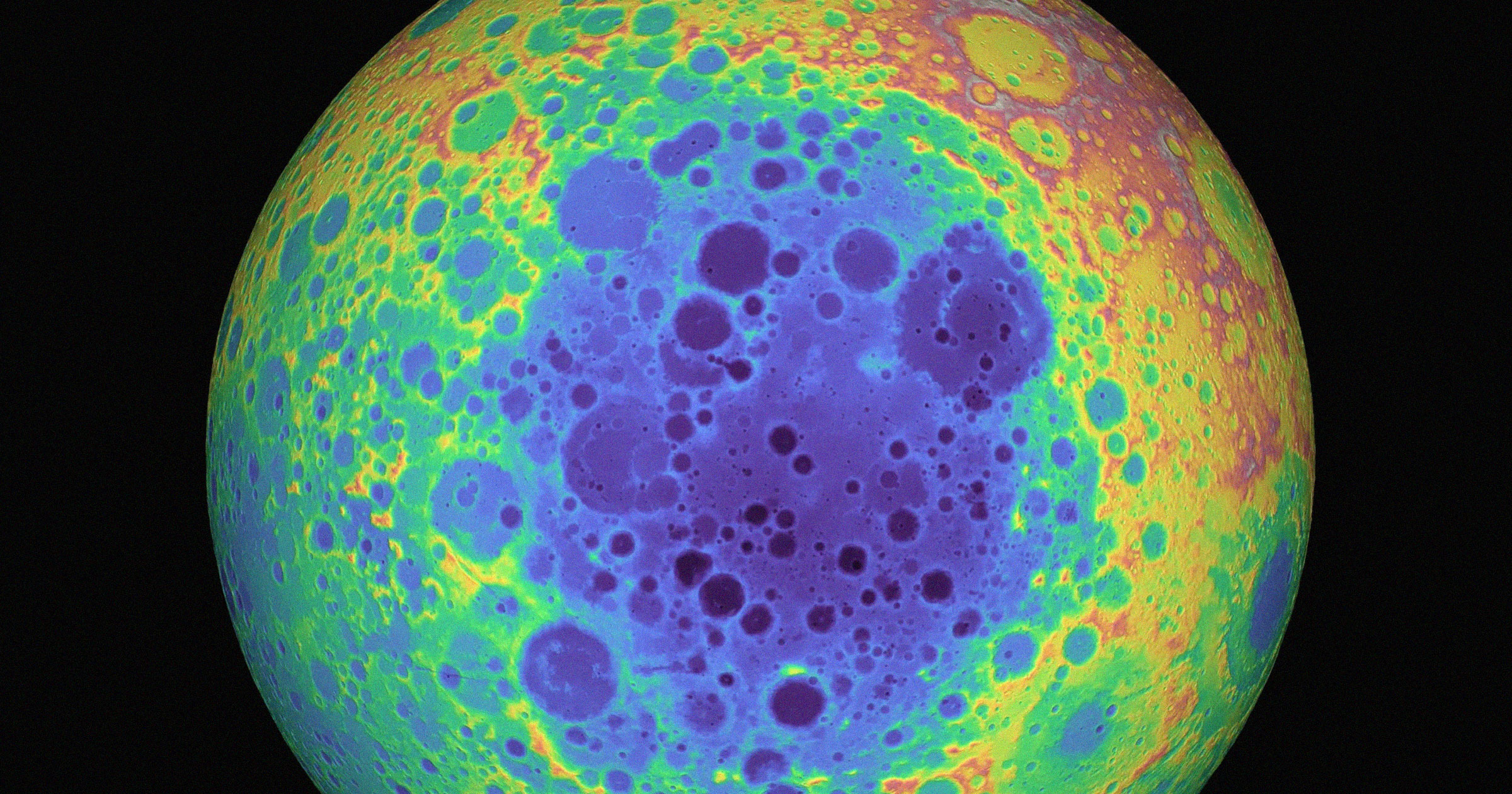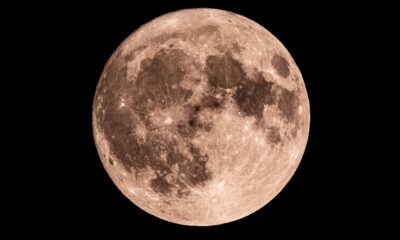Science
Scientists Uncover Secrets of Moon’s Largest Crater Ahead of NASA Landing

Recent research has revealed new insights into the formation of the Moon’s largest crater, the South Pole-Aitken (SPA) basin, which is approximately 4.3 billion years old. Contrary to previous beliefs that it resulted from a direct asteroid impact, a study published in the journal Nature suggests that the crater was formed by a glancing blow from a celestial body striking the Moon at a southward angle. This finding could illuminate the stark contrast between the Moon’s far side, which is heavily cratered, and the more familiar near side, known for its smoother surface.
The implications of these findings are significant for NASA’s upcoming missions to the lunar south pole under the Artemis program. According to lead researcher and planetary scientist at the University of Arizona, Jeffrey Andrews-Hanna, the landing sites for these missions will be on the down-range rim of the basin. This area is considered optimal for studying the largest and oldest impact basin on the Moon, where debris from deep within the Moon’s interior is likely to be concentrated.
The research team conducted a detailed analysis of the SPA’s shape, comparing it with other large impact basins across the solar system. They concluded that its elongated, teardrop form is indicative of a southward impact, which gouged the Moon’s crust and exposed heavier minerals. Current theories propose that the Moon was initially covered by a magma ocean, a remnant of the intense energy released during its formation. As the magma cooled, denser materials sank to create the mantle, while lighter minerals formed the crust.
The study highlights a fascinating aspect of lunar geology: the distribution of certain minerals. The researchers identified a concentration of potassium, rare earth elements, and phosphorus—collectively referred to as KREEP—that became trapped between the mantle and crust. Andrews-Hanna likened this process to placing a can of soda in the freezer, noting that as the liquid freezes, the syrup remains in liquid form longer, resulting in a concentrated layer.
Interestingly, KREEP-rich materials are predominantly found on the Moon’s near side, raising questions about the Moon’s geological history. The latest findings suggest that the far side’s crust thickened over time, which forced the magma ocean’s remnants toward the near side, analogous to squeezing toothpaste from a tube. This process could explain the asymmetrical distribution of radioactive elements and ejecta between the two sides.
The research emphasizes the vast knowledge still to be uncovered about the Moon. As NASA prepares for its Artemis missions, Andrews-Hanna asserts that samples collected during these expeditions will provide valuable insights into the Moon’s evolution. “With Artemis, we’ll have samples to study here on Earth, and we will know exactly what they are,” he stated. “Our study shows that these samples may reveal even more about the early evolution of the Moon than had been thought.”
These revelations not only deepen our understanding of the Moon’s geological past but also enhance the excitement surrounding NASA’s planned return to the lunar surface after more than 50 years. As astronauts prepare to land at the SPA, they may uncover secrets that reshape our comprehension of our closest celestial neighbor.
-

 Technology4 months ago
Technology4 months agoDiscover the Top 10 Calorie Counting Apps of 2025
-

 Health2 months ago
Health2 months agoBella Hadid Shares Health Update After Treatment for Lyme Disease
-

 Health3 months ago
Health3 months agoErin Bates Shares Recovery Update Following Sepsis Complications
-

 Technology3 weeks ago
Technology3 weeks agoDiscover 2025’s Top GPUs for Exceptional 4K Gaming Performance
-

 Technology2 months ago
Technology2 months agoElectric Moto Influencer Surronster Arrested in Tijuana
-

 Technology4 months ago
Technology4 months agoDiscover How to Reverse Image Search Using ChatGPT Effortlessly
-

 Technology4 months ago
Technology4 months agoMeta Initiates $60B AI Data Center Expansion, Starting in Ohio
-

 Technology4 months ago
Technology4 months agoRecovering a Suspended TikTok Account: A Step-by-Step Guide
-

 Health4 months ago
Health4 months agoTested: Rab Firewall Mountain Jacket Survives Harsh Conditions
-

 Lifestyle4 months ago
Lifestyle4 months agoBelton Family Reunites After Daughter Survives Hill Country Floods
-

 Technology3 months ago
Technology3 months agoUncovering the Top Five Most Challenging Motorcycles to Ride
-

 Technology4 weeks ago
Technology4 weeks agoDiscover the Best Wireless Earbuds for Every Lifestyle





















